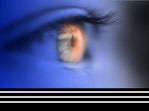Investigating the
Hudson Street Hauntings
LindaAnn LoSchiavo
Not until I acquired the Van Kalff
archives at auction—pages brittle with age and discolored by sinister
smudges—did I begin to understand the true horror that festered beneath Hudson
Street, specifically between Christopher Street and Barrow Street.
Historians have spoken neutrally of an
Episcopal church's construction in 1821, of its hundred burial vaults
meticulously arranged in tidy rows beneath a generous churchyard. The original
prospectus proposed discreet stone slabs.
Concerned about interfering with real estate values by putting death on
display, architects assured buyers that only the flat, inscribed tomb coverings
would be visible on the surface, an inoffensive reminder of the rotting corpses
sequestered below.
Did those good Christians consider that
troubled presences won’t lie still forever?
When
they emptied those vaults after the Civil War, transferring the bones to more
fashionable resting places, these actions awakened something. Something that
had waited, patient and malevolent, in that consecrated earth. But wealthy Greenwich
Villagers, desperate to
protect their property values, wielded bribes like weapons to silence the press
from reporting on any household tumult arising from spectral disquietude.
Nevertheless,
in the Van Kalff family's private records, now in my sole ownership, the
astonishing truth writhes like a serpent between the lines.
In
case the name is unfamiliar, here’s a bit of back story. Patriarch Bram Van
Kalff, fresh from his blood-soaked tobacco empire built on the backs of the Kentucky
slave trade, decided it was time to relocate to the East Coast where his
daughters could be introduced to society.
He brought his family—and ten of his "servants"—to a grand new
townhouse on Barrow Street which backed on to a private mews. Though his
fortune could purchase servitude and obedience, he would come to learn it
couldn't buy peace.
The first visitation came
to Covey, the coachman whose ancestors had worshipped darker gods than Van
Kalff's Protestant Lord. The eerie mist that crept into the stables one night
moved with purpose, with hunger. It didn't merely spook the horses—it possessed
them. The pinto's eyes rolled white with an intelligence that was neither
equine nor natural as its iron shoes almost split Covey’s skull.
Pregnant with her sixth
child, Bess Van Kalff was alert to portents of impending doom. Bess's diary
betrayed her terror beneath a
veneer of dismissal about "the
peculiar darkie incident" in the stables. Her desperate attempt to buy
divine protection with her husband's money—a "fat envelope" delivered
to the rectory by Calvin, the eldest son—offered clues to sleepless nights and
unspoken fears.
Meanwhile, her spinster
sister Liesbeth Van Der Beek, a frequent house guest, kept a hymnal which
revealed darker premonitions, scribbled in the margins. Liesbeth’s nightly
prayers were being
interrupted by watchful disembodied eyes glimpsed in mirrors. Her white
pillowcase often bore traces of grimy hands.
Her quilt started to smell as fusty as moldering gravecloths.
Two
weeks after his expensive horses became unruly, Bram, too, had a bizarre
encounter. He spotted a wild beast while
strolling through the normally peaceful precincts of Lispenard's Meadow. As
the mongrel tried to attack, Bram’s
bullets, though true to their mark, passed through flesh that seemed to be more
smoke than sinew. In the aftermath, Sarah Lispenard spoke to a New York Sun columnist
of queer
phosphorescent pawprints that burned the grass – but denied the presence of any
predator larger than a great horned owl.
The
West Village mysteries escalated in intensity. While searching the sewing nook
for hair
ribbons, Kornelia Van Kalff, the youngest daughter, was horrified to see a slim
freckled redhead suspended from a noose by the grape arbor. She hastened to leave
the house to borrow a pair of shears from the elderly gardener next door.
Shocked, he explained the hanging girl resembled Sarah O'Malley, whose body had
been among the first interred in the vaults—and among the last removed. They
ran to his tool shed for a tarp and the
shears. But when they returned, both the rope and the suspended girl were gone.
Thereafter, whenever Kornelia ventured outside to pick flowers for the supper
table, she felt that the trees seemed tilted—all leaning as if to touch her.
Twice she discovered shards of bone in the geranium urns.
Worse was to come. After a few more close calls with bucking horses,
Covey began hearing disquieting sounds in the stalls: whispering, knocking, and
choking noises. After a week of this, Covey ran away. Or was he, wondered
Bess, abducted?
When the hauntings breached the
sanctuary of the Van Kalff home, it brought with it the stench of disturbed
graves and the weight of generational sin. The pleasant fiction of Greenwich
Village's genteel society began to unravel, revealing the corruption that had
always festered beneath its manicured surface.
And
in my research, I've found something more disturbing still: property records
showing that my own home sits atop what was once part of that accursed
churchyard. Last night, I heard knocking beneath the floorboards. This morning,
there was soil in my bed.

